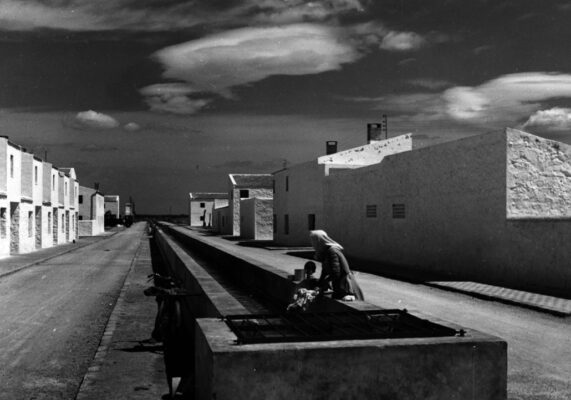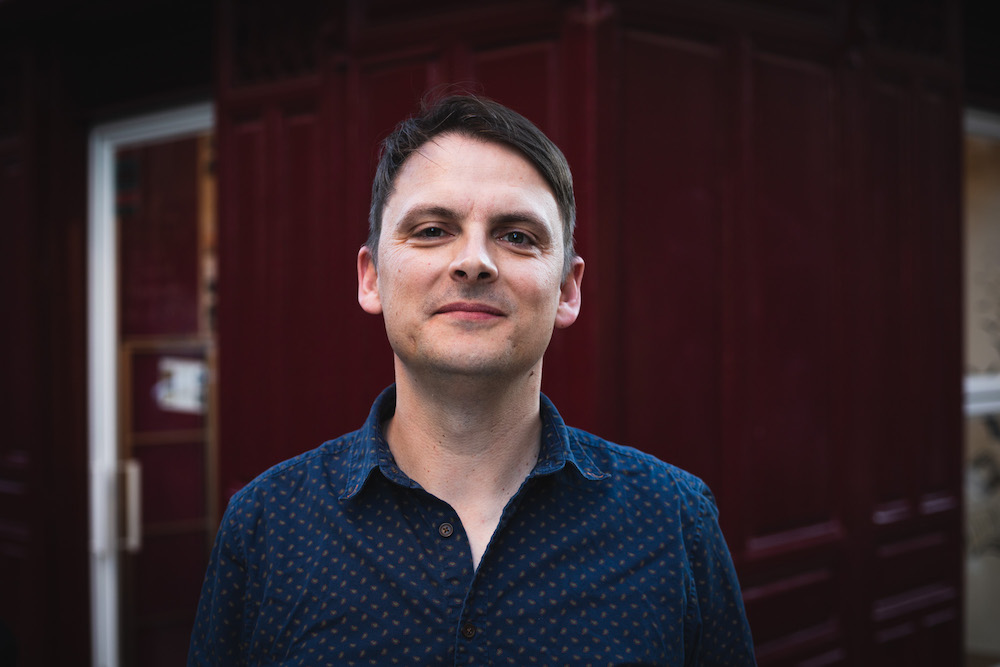Search
To search for an exact match, type the word or phrase you want in quotation marks.
A*DESK has been offering since 2002 contents about criticism and contemporary art. A*DESK has become consolidated thanks to all those who have believed in the project, all those who have followed us, debating, participating and collaborating. Many people have collaborated with A*DESK, and continue to do so. Their efforts, knowledge and belief in the project are what make it grow internationally. At A*DESK we have also generated work for over one hundred professionals in culture, from small collaborations with reviews and classes, to more prolonged and intense collaborations.
At A*DESK we believe in the need for free and universal access to culture and knowledge. We want to carry on being independent, remaining open to more ideas and opinions. If you believe in A*DESK, we need your backing to be able to continue. You can now participate in the project by supporting it. You can choose how much you want to contribute to the project.
You can decide how much you want to bring to the project.

Spain during Franco created three hundred new towns between the 1940s and 70s, a fairly recent and large-scale agrarian colonization process of which many Spaniards are unaware.
In the post-Civil War, a Spanish peasant was well equipped to die of hunger, along with his wife or any of his five children. Too many entire families barely survived without much to lose. Franco knew very well about this situation. He had no qualms about completing the process of an internal colonization that had been attempted in Spain for decades, even centuries, before.
Between the 1940s and 70s of the 20th century, around three hundred new towns were founded in Spain, the vast majority on the banks of the main rivers in Andalusia, Extremadura, Castilla and Aragón. This process involved the transfer of 55,000 families. In terms of the magnitude of the population, it can be compared to the migration of one million Andalusians to Catalonia that occurred around the same time. Unlike the latter, less than half of the migration that concerns us in this text has been talked about.
Franco did not invent anything but he saw that the problem of unemployed labor and unproductive land was a perfect match for the consolidation of the regime in the rural area. He had studied the background and knew how to read the political climate of the social hangover of a war that he himself had started. It was he himself who had executed the definitive plan through a law that implemented the expropriation of vacant lands with compensation to their owners. In 1939, he created the National Institute of Colonization, the governmental body in charge of managing the distribution of land to the settlers and the construction of the new towns in which they would settle.
This event, despite being recent is, incredibly, unknown. How is it possible that we barely talk about all those towns, created by rationalist architects and their unprecedented modern plans for rural environments, born from internal migrations and to which new types of migrations are being added today?
Establishing a population in any geography has always had to do with making virgin territories cultivable. This is how nomadic peoples became sedentary. From this basic need to live and cultivate, the word “colony” and the action and effect of colonizing arose, giving rise to colonization. Many groups of Spanish people tried it, partially succeeded, failed and continued wandering until succumbing to the power and technology of the Romans, who established their first colonies in Spanish territory. Centuries passed in this way, with numerous attempts to expand arable land, with many wars, and with many waves of invaders and re-conquerors.
It was in the 17th century when people in Spain first began to realize that something had to be done with rural depopulation and unproductive lands. In the following century, with the Enlightenment’s maxim of “to govern is to populate,” Charles III undertook a project at the end of the 18th century that attracted the attention of several European countries: six thousand people were settled in new towns founded as agrarian colonies in the Sierra Morena. The well-known French illustrator Gustav Doré recorded this event in his engravings.
During the second half of the 19th century, two laws were enacted that aimed to disperse settlers throughout the countryside without building towns. That is, to build the so-called rural hamlets. This, however, failed to increase the always insufficient production and Spain still had a lot of land, in the hands of a few people, that neither produced nor was used at all.
The politics of water in the late 19th and early 20th centuries were decisive for the future of agrarian colonization in Franco’s Spain. Joaquín Costa was its major proponent and his plan consisted of the creation of reservoirs to store water and to distribute it, through canals, to the places where it was most needed. That is, to convert dry land into irrigable land. This political program, due to its vast size or to the lack of resources and will, was not able to attain the reach that was needed at that time.
The 1934 Water Works National Plan, approved during the government of the Second Republic, took Costa’s ideas and applied them for a short period until 1936 when the Civil War broke out. After the conflict and the victory of Franco, the last stage of the agrarian colonization process in Spain, the last and the definitive one, began.
In 1939, the National Institute of Colonization was created and the confiscations that had been carried out by the Institute of Agrarian Reform were annulled. Expropriations were reconsidered, and each of the owners was compensated and, without doing absolutely anything, their dry and barren lands would become fertile by means of irrigation. Meanwhile, in the experiment of making them productive, the regime’s guinea pigs were the settlers, as it took them years to get anything that grew on those dry and cracked plains.
“Franco gave us” between twelve and twenty-four acres, farm tools, a team of horses, a dairy cow, some pigs and a huge house planned by a modern architect, the same one who designed the town and its church. The truth, however, is that Franco gave nothing and the colonists had to pay for everything themselves, and had to meet impossible harvest goals, as well. What’s more, some of them did not even have the possibility of returning to their hometowns, as their houses had been flooded and had become swamps.
In certain places, a scattered housing model that had been attempted in the middle of the 19th century was established, with a rural farmhouse in the middle of a plot, although these were only a few specific cases. What was prioritized was the creation of new towns somewhat distant from the crop fields, with a rhetoric of a refined nation, model towns with new anti-worker farmers, and stripped of urban political vices. Once installed, the settlers had to agree on what myths they would create, that is, what type of festivals, which virgin, and which patron saint they wanted. The new traditions.
The Spanish colonization towns were born in virgin territory, where everything had to be made from scratch and many hands were needed to work. This was accomplished. Towns forged ahead, some became depopulated, very few disappeared, many grew in population and watched as their architectural heritage disappeared. The children of the settlers had their own children and new generations who watched the original settlers die. These children often migrated and returned to the towns for summer vacation. Now, new migrants have arrived in these towns and the mosaic has become richer. Gypsies and Romanians who work in services, clothing fairs and different agricultural activities have moved into the interior of Extremadura. North Africans and sub-Saharans have moved into the colonization towns of Almería to harvest the vegetables and fruits that are grown in acres and acres of greenhouses. Migrants from Latin American and from countries in Eastern Europe and Asia have become dispersed throughout the population of the Spanish agrarian colonization. There is also a new internal migration, as a trickle and sporadically, that continues to energize the Spanish rural sector.
[Featured Image: El Realengo. Estudio Fernández del Amo]

Laureano Debat is a cultural journalist and writer. He was born in Argentina and has lived in Spain since 2009. He has published the book of chronicles Barcelona Inconclusa (Candaya, 2017), the novel Casa de nadie (Candaya, 2022) and participates with a story in the anthology Pasaje de ida (Alfaguara, 2018), about Argentine writers living abroad. For 2024 she is preparing, together with writer Marta Armingol, the book Colonización. Historias de los pueblos sin historia, to be published by La Caja Books.
[Photo credits: Kalamadriz]
"A desk is a dangerous place from which to watch the world" (John Le Carré)